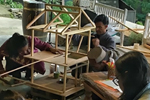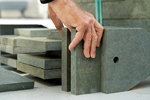
Vikas Dilawari,
Vikas Dilawari Conservation Architects
Oormi Kapadia
Plural
Moderated by
Asad Lalljee,
supported by Avid Learning
In a rapidly modernizing world, cities face the critical challenge of balancing conservation with sustainable development. In alignment with the 2nd edition of Godrej’s Conscious Collective Talks’stheme 'Bridging Horizons,' this session will explore how we can preserve our architectural heritage while adapting to the needs of expanding urban landscapes. Through focused presentations and a moderated discussion, our speakers will delve into the importance of safeguarding cultural identity, the impact of urban planning on neighborhoods and streetscapes, and innovative strategies for merging heritage conservation with modern growth. The conversation will provide actionable insights into creating livable, inclusive cities that honor both the past and future, ensuring that cultural legacy and progressive urban planning go hand in hand.














